#finding guide
Explore tagged Tumblr posts
Text

I'll give them shelter like you've done for me
#my art#jujutsu kaisen#jjk#jjk fanart#jujutsu kaisen fanart#megumi fushiguro#yuji itadori#itafushi#jjk spoilers#jjk manga spoilers#jjk leaks#jjk art#fushiguro tsumiki#took all afternoon but we wrangled the colours in2 submission#it was looking very green and kind of muddy#so i toned down the saturation in a bunch of places pulled in a lot more grey#kept a lot of the shadows Hard#i think it works#not sure it's the absolute best it cld be but i am Satisfied with it#overall i ws just kind of worried that it was looking rly similar to past pieces colour-wise#i think it kind of still Is but not as much as it would have been had i not made those edits#anyway. emo hours#ive been listening to jubyphonic's piano arr of shelter and thinking abt megumi#thinking abt him growing up n looking back on himself n seeing himself in tht lonely little boy#'it's a long way forward so trust in me' smth smth finding the strength to guide that kid forward even though both of u are scared#bc at the end of the day u Are still that kid#inner child stuff usually doesnt resonate much with me bc i don't like who i was/am/whatever this aint abt me#but in regards to megumi????? OW#in lighter news i remembered at the absolute last minute to lob off the top of yuuji's ear#bc that injury at least i think he keeps ghfssdfhfgsj
6K notes
·
View notes
Text
A Guide to Some of the Best Queer Asian Shows
The guide includes a show’s basic summary; main genres/tropes/themes and official streaming links (additional info on how to watch at the end of this post)! You can find some content warnings in the reply section of this post. Shows are listed by countries, numbered by the order I recommend watching in, not by rating. All shows have happy endings unless specified otherwise. The list will hopefully be updated regularly (last updated on 04/04/2024, 98 queer shows in total).
Most shows are about mlm, I specify with coloured notes those that are focused on wlw, polyamory, aromantism/asexuality, etc.
Tumblr does not allow large texts or more than 30 images per post at the moment, so you can click on every country’s list to expand them and view them fully in a separate post. You can access this guide in a google doc here.
Thailand 🇹🇭 (full list here)

1. KinnPorsche mafia boss/bodyguard; action; kidnapper/kidnapee side couple
Kinn, a son of a prominent mafia head, is ambushed by an enemy, and meets Porsche, a bartender who comes to his rescue for a price, thus beginning their reluctant relationship as boss and bodyguard, which soon turns into something more.
iQIYI
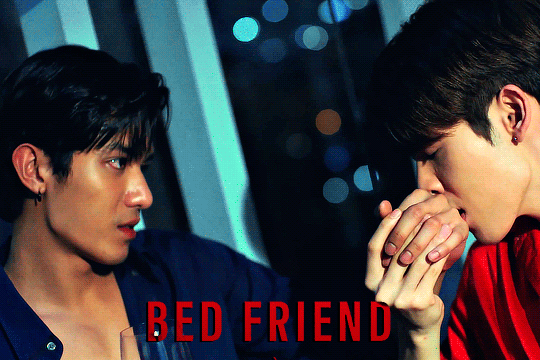
2. Bed Friend friends with benefits; office setting; trauma
King and Uea work in the same office. After a company outing ends in a drunken hook-up between them, Uea and King agree to keep seeing each other on a strictly physical basis. With no strings attached, will these two be able to keep things between them simple and carefree or will their emotions eventually get the better of them?
Uncut 18+ on iQIYI or GagaOOLala or cut on YouTube
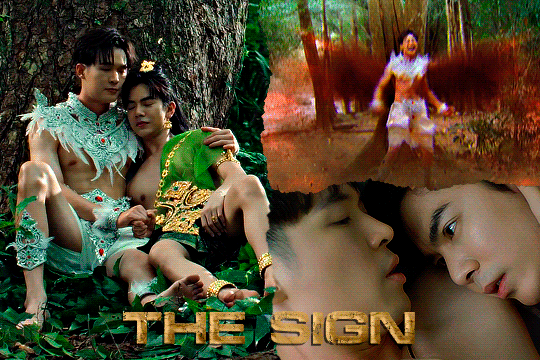
3. The Sign reincarnated lovers; fantasy; thai mythology; police
The story of the love between Phaya and Tharn who used to be mythological creatures Naga and Garuda in their past lives, and were forced apart. But fate intervened, and two men were reincarnated in new bodies. Now, they work together as partners in the Special Investigations Unit to uncover violent crimes and supernatural mysteries while their love is tested by mystical forces and past enemies.
YouTube

4. I Feel You Linger In The Air period drama; time travel; bittersweet
Jom, an architect overseeing the renovation of a rundown villa, continuously dreams of a man he's never met. When a twist of fate transports Jom to Chiang Mai in the 1920s, he assumes the role of a servant to the affluent young master Yai, the mysterious man from his dreams.
GagaOOLala or YouTube

5. You're My Sky sports; university setting; coming of age
Thorn, a young basketball player follows his senior Fah to university as a result of the promise they’d made — to become national basketball champions. However, to his dismay, he finds that Fah has already given up on basketball. --- Aai has to work in pairs throughout the semester with San, 1 year footballer; in order to receive a scholarship to study in Japan, Ai must be willing to do everything to get an A grade. --- Track running requires the compatibility of the team members to be very high. Vee, who became the new racquet 4, has to speed up training to fit in with the team as quickly as possible, especially with Dome, spending extra time together to train. Is love actually a major obstacle on the path of being an athlete?
Viki
> more tv shows from Thailand
GMMTV Thailand 🇹🇭 (full list here)

1. My School President high school setting; secret crush; school president/rebel musician
Gun is the head of his high school music club. Tinn is a school president and Gun's long-term rival. The Principal wants to disband some of the school’s “useless” after-school clubs, especially the music club. Per school rules, the student council president is the one who has the power to dissolve clubs. Gun is now at Tinn’s mercy, so he attempts to do whatever he can to persuade his rival not to cancel the music club. Little does he know, Tinn actually has a secret crush on him. Could romance brew as Gun makes a desperate attempt to secure the future of his band?
Viki (MSP) & YouTube (Our Skyy special 33-40) & YouTube (special)

2. Moonlight Chicken adult romance; age gap; deaf character
Jim is an ordinary guy running a chicken rice diner. One night, he meets Wen when he stays past closing drunk. Brought together by fate that night, intangible feelings arise. Neither can stop thinking about the other despite Jim's efforts to remain unattached. Jim also takes care of his nephew Li Ming, who is falling in love with Heart, a deaf teenager who is practically kept under house arrest by his affluent parents.
YouTube

3. Not Me revolution; freedom fighters; secret twins
When his twin Black is viciously attacked and subsequently left hospitalised in unconsciousness, White is unable to endure the harm done to his brother in silence. He learns Black was a part of a gang of anti-capitalist freedom fighters, and it was one of them who betrayed him. White disguises himself as Black to discover which one of them betrayed him and put him in a coma.
YouTube

4. 23.5 wlw; high school setting; secret admirer
Ongsa moves to a new school and meets Sun, a cute popular girl who she immediately falls for. However, she decides to approach Sun in instagram dms under the pseudonym Earth, leading Sun to believe she's talking to a guy. But Ongsa does not want to lose the opportunity to talk to Sun, so she decides to keep the fact that she is a girl a secret and continue talking as Earth.
YouTube
> more tv shows from GMMTV Thailand
Japan 🇯🇵 (full list here)

1. Cherry Magic! mind reading; secret crush; office setting
By still being a vіrgin at 30, Adachi gains a magical power – the ability to read other people's minds by touching them. At first, he’s overwhelmed by his new ability, and it’s not proving to be helpful to him. But that all changes when he accidentally touches their office’s most perfect guy Kurosawa, who he learns has romantic feelings for him.
WeTV (Cherry Magic) & no international streaming of Cherry Magic The Movie is available to my knowledge, so watch on bilibili or KissKH

2. Kieta Hatsukoi (My Love Mix-Up!) misunderstanding; high school setting
Aoki has a crush on Hashimoto, the girl in the seat next to him in class. But he despairs when he borrows her eraser and sees she's written the name of another boy — Ida — on it. To make matters more confusing, Ida sees Aoki holding that very eraser and thinks Aoki has a crush on him!
Viki

3. Our Dining Table food; child character
Salaryman Yutaka finds it difficult to share meals with other people. However, his life starts to change when one day, his cooking attracts the attention of a young boy named Tane and his older brother Minoru. The two brothers are impressed by Yutaka's cooking skill and invite him to their house to cook together. Yutaka's dreary life begins to change, and soon he finds himself looking forward to the meals he shares with the Ueda siblings together, as well as developing a taste for romantic feelings.
GagaOOLala
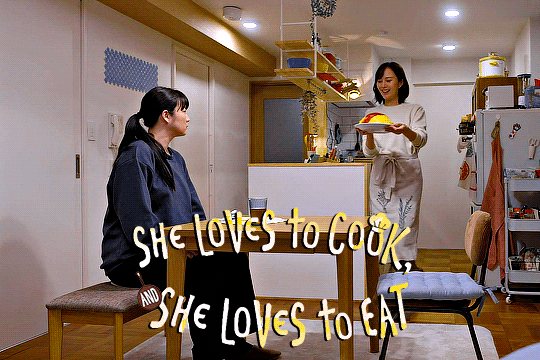
4. She Loves to Cook and She Loves to Eat wlw; neighbours; self-discovery; food
Nomoto loves to cook, but tends to make too much food and has no one to share it with. Luckily for her, turns out her neighbor Kasuga has a big enough appetite for the both of them.
No international streaming available, translated to english by Furritsubs, S1 & S2, watching instructions provided, please support translator on kofi.
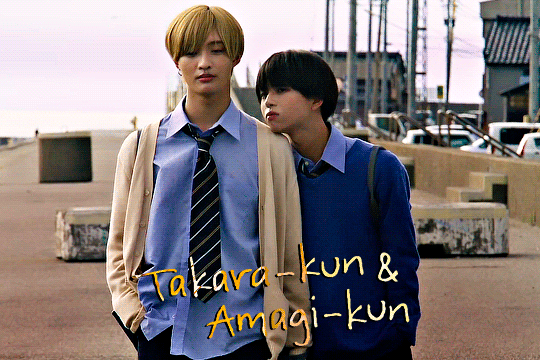
5. Takara-kun to Amagi-kun high school setting; relationship exploration
Takara is a good-looking popular guy in class, while Amagi is a simple but bright and pure fellow classmate. The two begin to date in secret after Amagi's blurted out confession.
Viki or GagaOOLala
> more tv shows from Japan
China 🇨🇳 (full list here)
Most chinese shows are adapted from explicitly queer novels, the shows are undeniably and obviously queer, but nevertheless the queer romance part is censured. The only exception is number 4 on the list, it is not censored.

1. The Untamed period drama; fantasy
An epic fantasy led by a problem child who comes back from the dead 16 years later in order to fix the broken world he left behind — and finally unite with his soulmate.
YouTube

2. Word of Honor period drama; fantasy
The leader of assassin organisation Zhou Zishu quits his position in pursuit of freedom with drastic measures. In his travels, he meets Wen Kexing, the leader of Ghost Valley who wants nothing but revenge. The two become entangled in various machinations within the martial arts world, and eventually become soulmates instrumental in each other's redemption.
YouTube & Special Episode on Tumblr or DailyMotion
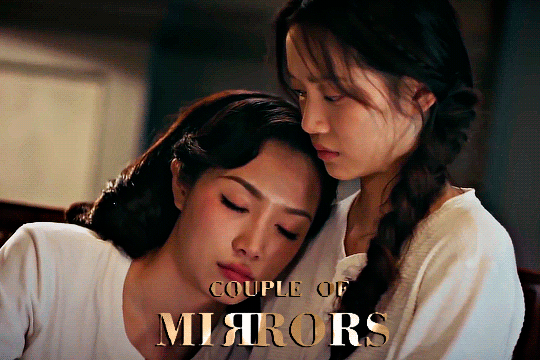
3. Couple of Mirrors wlw; period drama; socialite/assassin
You Yi is a kind-hearted socialite and a successful author. Her perfect life is turned upside-down when she discovers a betrayal by the two most trusted people in her life. With no one left to turn to, she finds refuge in the friendship and support of Yan Wei, a lonely female killer disguised as the owner of a photo studio.
YouTube. the show doesn’t have a happy ending, but it can be a happy ending for you if you stop watching at episode 12 timestamp 28:02.

4. Stay With Me enemies to lovers; high school setting; unconventional families; slow burn
Su Yu is a high school student who lives with his single poor father. Su Yu gets a new classmate Wu Bi. The two clash right from the start, and after getting off on the wrong foot, their explosive relationship takes a turn.
YouTube or GagaOOLala. the show doesn’t have a happy ending, but it can be a happy ending for you if you stop watching at episode 24 timestamp 05:00. OR watch the full thing and look at this post after

5. The Spirealm inside of a video game; mystery; fantasy; horror-ish; hopeful ending
A game designer Lin Qiushi is transported inside of a game he recently played, and now he must go through 12 horrifying survivor game doors to survive in the real world. Inside his first door he meets Ruan Nanzhu, a mysterious man who offers him to team up.
The show was taken down from streaming, download files here and subtitles here.
Various WLW mini web-dramas here.
Various WLW short films here.
South Korea 🇰🇷 (full list here)

1. Love for Love's Sake inside of a video game; high school setting; healing
At the age of 29 Tae Myungha finds himself transported into a fictional video game, and now 19 years old, he meets Cha Yeowoon, who is in the darkest moment of his life. And a translucent window appears where he receives a mission — to make Cha Yeowoon happy.
iQIYI (better subtitles) or GagaOOLala
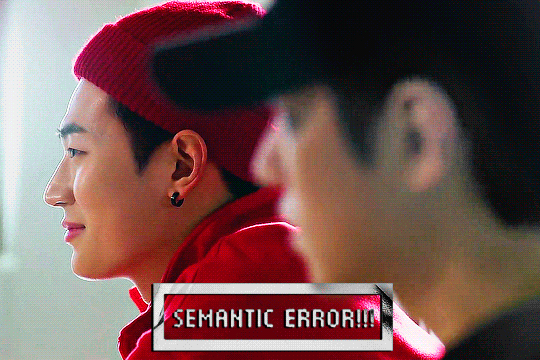
2. Semantic Error enemies to lovers; university setting
A serious programmer and a rebellious artist clash over a school project. Their animosity keeps escalating to new extremes, defined by petty pranks and feisty arguments.
Viki

3. Love Tractor farm setting; farmer/city musician
Sunyeol, a city man with zero ability to survive in the countryside, comes to his grandfather's rural home. In front of him appears Yechan, a passionate and kind young farmer. While learning about rural life and assisting with farming tasks, Sunyeol gradually finds himself drawn to Yechan's warm and straightforward nature, while Yechan helplessly falls for Sunyeol.
iQIYI

4. Our Dating Sim high school friends to lovers; office setting
After 7 years, Lee Wan meets his first love, Shin Kitae, in a gaming company. When they were best friends in high school, Lee Wan was in love with Kitae. But he ran away and disappeared after confessing his feelings to Kitae after graduation. When the two of them begin working on a new dating simulation game and get more immersed in the project, old feelings are rekindled.
Viki or GagaOOLala
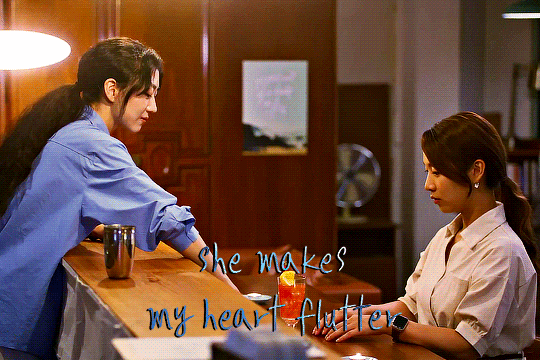
5. She Makes My Heart Flutter wlw; bar setting; niece and aunt dynamic
The extroverted Gang Seol is hired by her aunt Jung at her only-women bar. Even though they are both lesbians, they seem to be worlds apart and have very different love stories.
YouTube
> more tv shows from South Korea
Taiwan 🇹🇼 (full list here)

1. History3: Trapped mafia boss/policeman
The story of a police officer who becomes trapped in the underworld, as he develops feelings for a gang leader.
YouTube or Viki
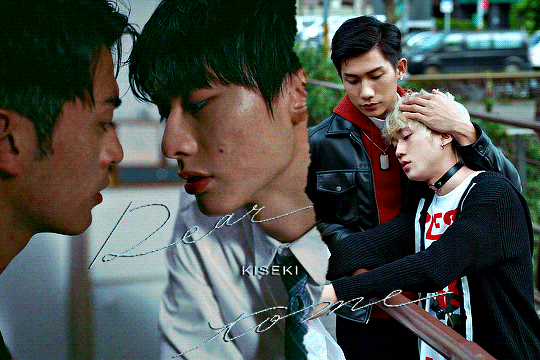
2. Kiseki: Dear to Me mafia; age gap
Bai Zongyi, an exemplary high school student with dreams of becoming a doctor, is one day unexpectedly drawn into the world of a charismatic and mischievous gangster Fan Zerui, who blackmails him into taking him in and treating his wounds. Just as their love story begins to unfold, Fan Ze Rui's criminal life catches up with him. On the other hand, Chen Yi and Ai Di are two orphans who grew up in the gang together. Ai Di has always loved Chen Yi, but Chen Yi only notices their boss.
Viki or GagaOOLala or YouTube

3. My Tooth Your Love dentist/chef; trauma healing
Bai Lang is a successful bistro owner with an severe fear of visiting the dentist... until a toothache forces him to come face to face with the handsome yet cold dentist Jin Xunan.
Viki

4. Anti Reset android/human
When Chu Yi Ping, an emotionless man, dislocates his hand in an accident at school, his uncle gives him Ever 9 as a caretaker, an experimental intelligent robot that his company is secretly testing.
Viki or iQIYI or GagaOOLala

5. History2: Crossing the Line sports; high school setting
When an injury sidelines a high school senior from the volleyball team, he develops feelings for a recruit.
YouTube or Viki
> more tv shows from Taiwan
Philippines 🇵🇭
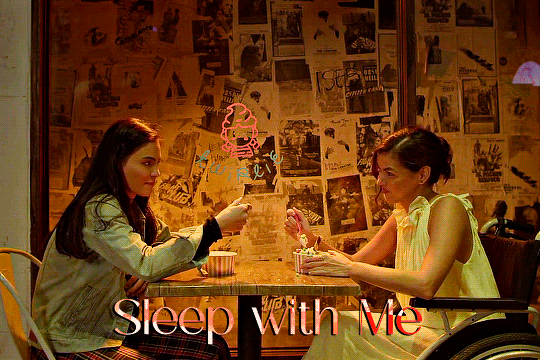
1. Sleep With Me wlw; radio; disabled character in a wheelchair
A science textbook writer with a sleep disorder meets a wheelchair-using radio host who runs the midnight shift. This chance encounter at the radio station quickly sparks their interest in each other.
GagaOOLala
---
You can watch many shows for free on YouTube, and watch others on the streaming websites by setting VPN to one of the countries in the list. In other cases I recommend paying for subscriptions to show appreciation and support of content in order to get more of it in the future, but if you can’t, watch on KissKH (better quality), Dramacool or get files from MkvDrama. Enjoy! 🏳️🌈🏳️⚧️
#queer#lgbtq#lgbt#gay#lesbian#mygifs#mine#tuserkatherine#usermor#23.5 degrees#kinnporsche#kinnporsche the series#the sign#the sign the series#cherry magic#the untamed#cql#word of honor#love for love's sake#kiseki dear to me#i feel you linger in the air#my school president#the spirealm#semantic error#ql master guide#if you find mistakes or something isn't working please let me know!!
7K notes
·
View notes
Text

Abby isn't scared of any FNAF animatronic..
#myart#chloesimagination#comic#abby schmidt#fnaf gregory#music man#mini music man#fnaf#fnaf movie#security breach#fnaf fanart#five nights at freddy's#Gregory was trying to be the cool guide for Abby#only to find out Abby doesn’t fear any animatronic#Abby gives off such ‘little girl who wants to adopt an opossum as a pet’#if that makes any sense#so the little spider music men do not scare her BAHA#SCARES Gregory for sure and is shocked she’d just pick one up like that 😭#these two are just lil goobies#just lil guys exploring the pizzaplex 🩵
5K notes
·
View notes
Text

take the parts of me i cannot stand, and replace them with what you can no longer carry
when i look at my reflection, let it be some rotted version of you
#gravity falls#billford#gf theseus’ guide#stanford pines#bill cipher#illustration#stump art#hi yes this is part of my au but i think works fine on its own as well#here's my comedy fanfiction with the backdrop of two extremely sad people ruin any chance of being happy together on purpose#all the time all the time#yippee#also here's a fun fact i think mabel can see fordtramarine just fine and always has been able to#i think mabel can see shrimp colors and if ford ever finds out he's gonna eat glass
1K notes
·
View notes
Text
Fantasy Guide to Interiors
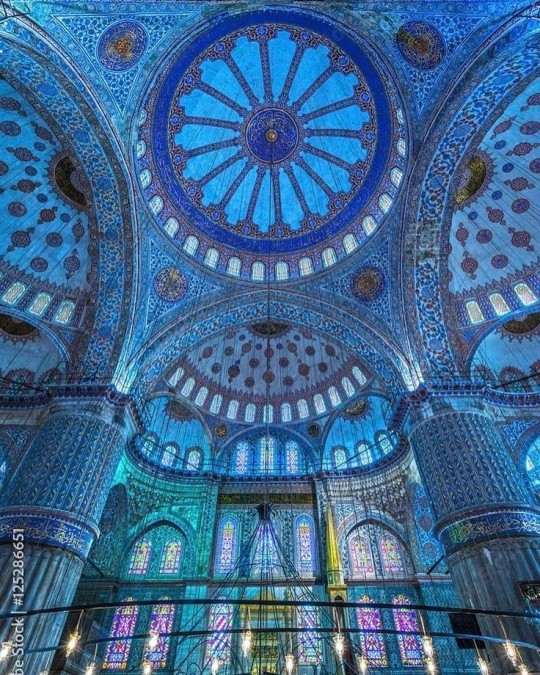
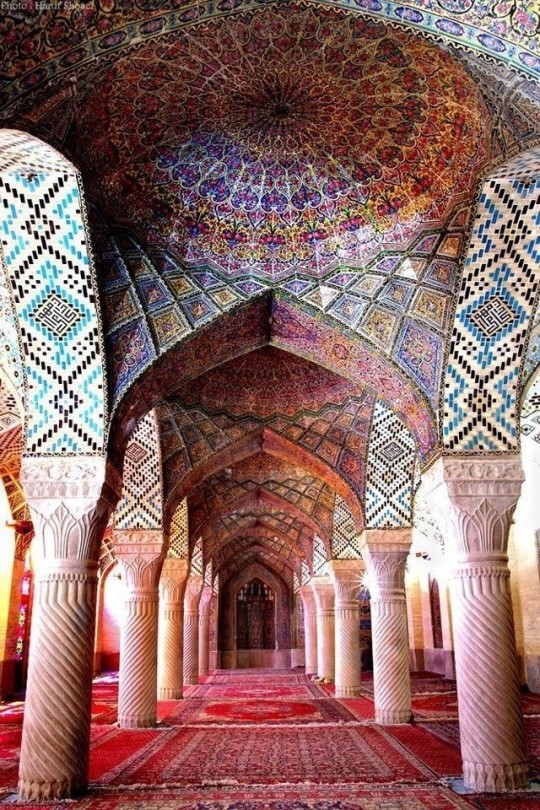
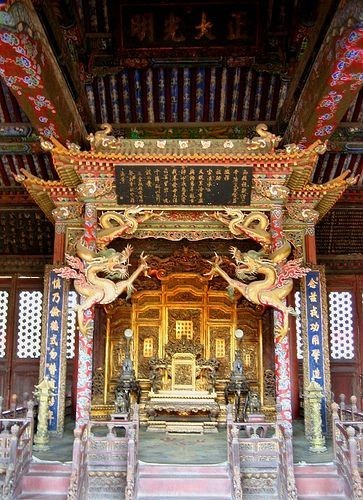
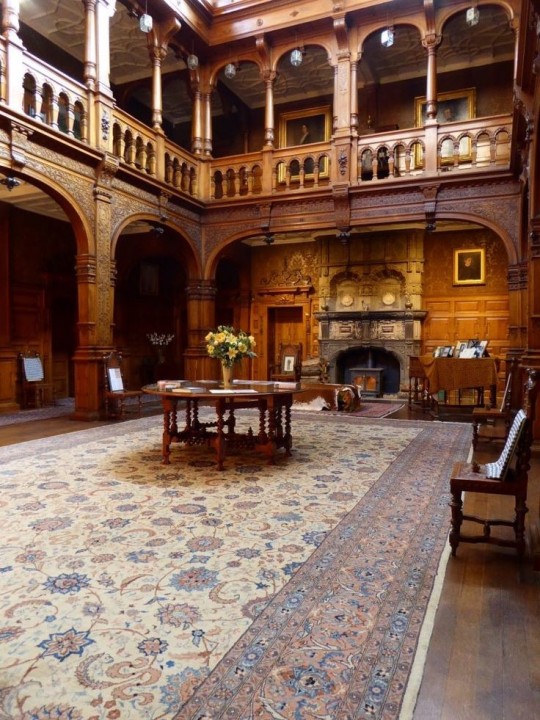
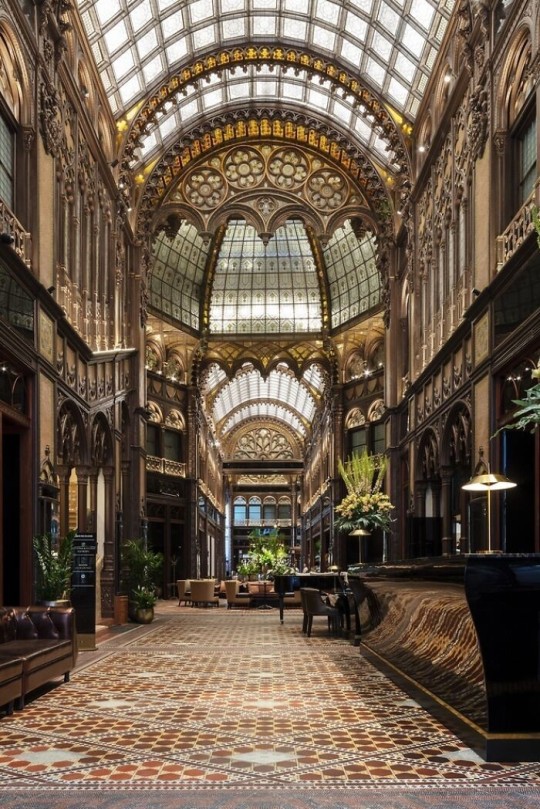
As a followup to the very popular post on architecture, I decided to add onto it by exploring the interior of each movement and the different design techniques and tastes of each era. This post at be helpful for historical fiction, fantasy or just a long read when you're bored.
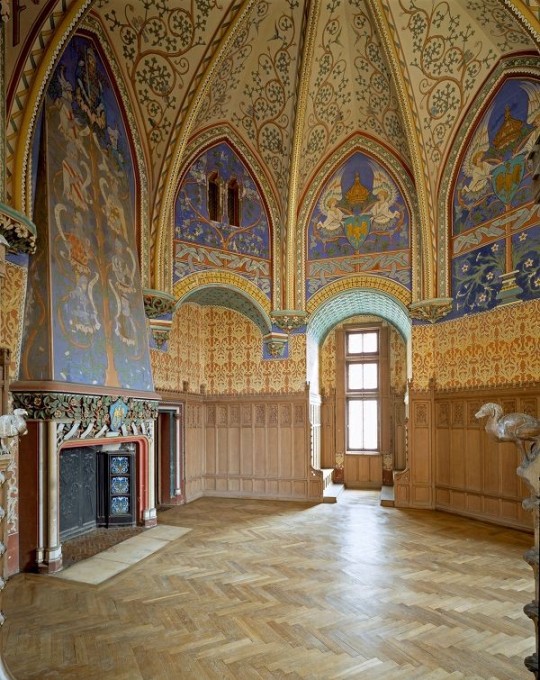
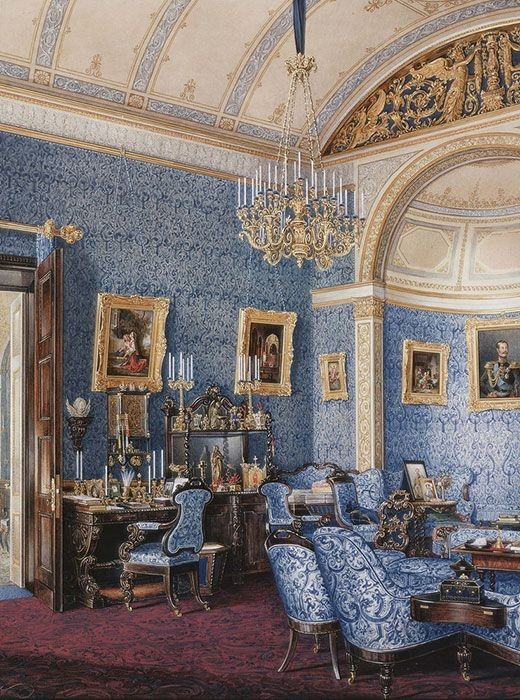
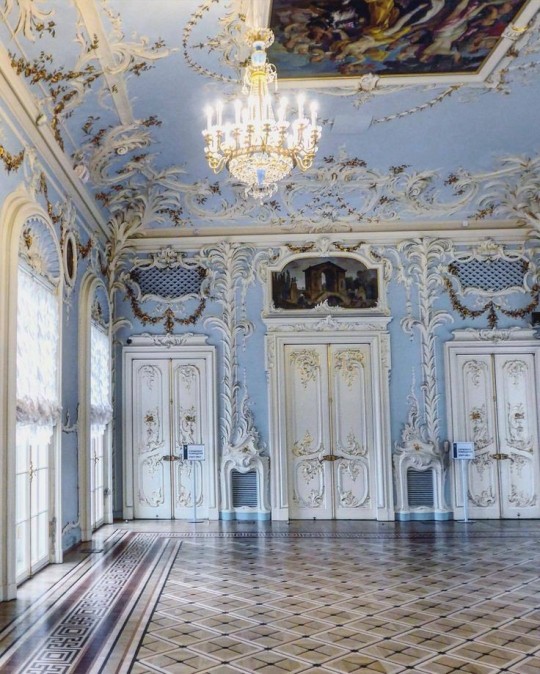
Interior Design Terms
Reeding and fluting: Fluting is a technique that consists a continuous pattern of concave grooves in a flat surface across a surface. Reeding is it's opposite.
Embossing: stamping, carving or moulding a symbol to make it stand out on a surface.
Paneling: Panels of carved wood or fabric a fixed to a wall in a continuous pattern.
Gilding: the use of gold to highlight features.
Glazed Tile: Ceramic or porcelain tiles coated with liquid coloured glass or enamel.
Column: A column is a pillar of stone or wood built to support a ceiling. We will see more of columns later on.
Bay Window: The Bay Window is a window projecting outward from a building.
Frescos: A design element of painting images upon wet plaster.
Mosaic: Mosaics are a design element that involves using pieces of coloured glass and fitted them together upon the floor or wall to form images.
Mouldings: ornate strips of carved wood along the top of a wall.
Wainscoting: paneling along the lower portion of a wall.
Chinoiserie: A European take on East Asian art. Usually seen in wallpaper.
Clerestory: A series of eye-level windows.
Sconces: A light fixture supported on a wall.
Niche: A sunken area within a wall.
Monochromatic: Focusing on a single colour within a scheme.
Ceiling rose: A moulding fashioned on the ceiling in the shape of a rose usually supporting a light fixture.
Baluster: the vertical bars of a railing.
Façade: front portion of a building
Lintel: Top of a door or window.
Portico: a covered structure over a door supported by columns
Eaves: the part of the roof overhanging from the building
Skirting: border around lower length of a wall
Ancient Greece
Houses were made of either sun-dried clay bricks or stone which were painted when they dried. Ground floors were decorated with coloured stones and tiles called Mosaics. Upper level floors were made from wood. Homes were furnished with tapestries and furniture, and in grand homes statues and grand altars would be found. Furniture was very skillfully crafted in Ancient Greece, much attention was paid to the carving and decoration of such things. Of course, Ancient Greece is ancient so I won't be going through all the movements but I will talk a little about columns.
Doric: Doric is the oldest of the orders and some argue it is the simplest. The columns of this style are set close together, without bases and carved with concave curves called flutes. The capitals (the top of the column) are plain often built with a curve at the base called an echinus and are topped by a square at the apex called an abacus. The entablature is marked by frieze of vertical channels/triglyphs. In between the channels would be detail of carved marble. The Parthenon in Athens is your best example of Doric architecture.
Ionic: The Ionic style was used for smaller buildings and the interiors. The columns had twin volutes, scroll-like designs on its capital. Between these scrolls, there was a carved curve known as an egg and in this style the entablature is much narrower and the frieze is thick with carvings. The example of Ionic Architecture is the Temple to Athena Nike at the Athens Acropolis.
Corinthian: The Corinthian style has some similarities with the Ionic order, the bases, entablature and columns almost the same but the capital is more ornate its base, column, and entablature, but its capital is far more ornate, commonly carved with depictions of acanthus leaves. The style was more slender than the others on this list, used less for bearing weight but more for decoration. Corinthian style can be found along the top levels of the Colosseum in Rome.
Tuscan: The Tuscan order shares much with the Doric order, but the columns are un-fluted and smooth. The entablature is far simpler, formed without triglyphs or guttae. The columns are capped with round capitals.
Composite: This style is mixed. It features the volutes of the Ionic order and the capitals of the Corinthian order. The volutes are larger in these columns and often more ornate. The column's capital is rather plain. for the capital, with no consistent differences to that above or below the capital.
Ancient Rome
Rome is well known for its outward architectural styles. However the Romans did know how to add that rizz to the interior. Ceilings were either vaulted or made from exploded beams that could be painted. The Romans were big into design. Moasics were a common interior sight, the use of little pieces of coloured glass or stone to create a larger image. Frescoes were used to add colour to the home, depicting mythical figures and beasts and also different textures such as stonework or brick. The Romans loved their furniture. Dining tables were low and the Romans ate on couches. Weaving was a popular pastime so there would be tapestries and wall hangings in the house. Rich households could even afford to import fine rugs from across the Empire. Glass was also a feature in Roman interior but windows were usually not paned as large panes were hard to make. Doors were usually treated with panels that were carved or in lain with bronze.
Ancient Egypt
Egypt was one of the first great civilisations, known for its immense and grand structures. Wealthy Egyptians had grand homes. The walls were painted or plastered usually with bright colours and hues. The Egyptians are cool because they mapped out their buildings in such a way to adhere to astrological movements meaning on special days if the calendar the temple or monuments were in the right place always. The columns of Egyptian where thicker, more bulbous and often had capitals shaped like bundles of papyrus reeds. Woven mats and tapestries were popular decor. Motifs from the river such as palms, papyrus and reeds were popular symbols used.
Ancient Africa
African Architecture is a very mixed bag and more structurally different and impressive than Hollywood would have you believe. Far beyond the common depictions of primitive buildings, the African nations were among the giants of their time in architecture, no style quite the same as the last but just as breathtaking.
Rwandan Architecture: The Rwandans commonly built of hardened clay with thatched roofs of dried grass or reeds. Mats of woven reeds carpeted the floors of royal abodes. These residences folded about a large public area known as a karubanda and were often so large that they became almost like a maze, connecting different chambers/huts of all kinds of uses be they residential or for other purposes.
Ashanti Architecture: The Ashanti style can be found in present day Ghana. The style incorporates walls of plaster formed of mud and designed with bright paint and buildings with a courtyard at the heart, not unlike another examples on this post. The Ashanti also formed their buildings of the favourite method of wattle and daub.
Nubian Architecture: Nubia, in modern day Ethiopia, was home to the Nubians who were one of the world's most impressive architects at the beginning of the architecture world and probably would be more talked about if it weren't for the Egyptians building monuments only up the road. The Nubians were famous for building the speos, tall tower-like spires carved of stone. The Nubians used a variety of materials and skills to build, for example wattle and daub and mudbrick. The Kingdom of Kush, the people who took over the Nubian Empire was a fan of Egyptian works even if they didn't like them very much. The Kushites began building pyramid-like structures such at the sight of Gebel Barkal
Japanese Interiors
Japenese interior design rests upon 7 principles. Kanso (簡素)- Simplicity, Fukinsei (不均整)- Asymmetry, Shizen (自然)- Natural, Shibumi (渋味) – Simple beauty, Yugen (幽玄)- subtle grace, Datsuzoku (脱俗) – freedom from habitual behaviour, Seijaku (静寂)- tranquillity.
Common features of Japanese Interior Design:
Shoji walls: these are the screens you think of when you think of the traditional Japanese homes. They are made of wooden frames, rice paper and used to partition
Tatami: Tatami mats are used within Japanese households to blanket the floors. They were made of rice straw and rush straw, laid down to cushion the floor.
Genkan: The Genkan was a sunken space between the front door and the rest of the house. This area is meant to separate the home from the outside and is where shoes are discarded before entering.
Japanese furniture: often lowest, close to the ground. These include tables and chairs but often tanked are replaced by zabuton, large cushions. Furniture is usually carved of wood in a minimalist design.
Nature: As both the Shinto and Buddhist beliefs are great influences upon architecture, there is a strong presence of nature with the architecture. Wood is used for this reason and natural light is prevalent with in the home. The orientation is meant to reflect the best view of the world.
Islamic World Interior
The Islamic world has one of the most beautiful and impressive interior design styles across the world. Colour and detail are absolute staples in the movement. Windows are usually not paned with glass but covered in ornate lattices known as jali. The jali give ventilation, light and privacy to the home. Islamic Interiors are ornate and colourful, using coloured ceramic tiles. The upper parts of walls and ceilings are usually flat decorated with arabesques (foliate ornamentation), while the lower wall areas were usually tiled. Features such as honeycombed ceilings, horseshoe arches, stalactite-fringed arches and stalactite vaults (Muqarnas) are prevalent among many famous Islamic buildings such as the Alhambra and the Blue Mosque.
Byzantine (330/395–1453 A. D)
The Byzantine Empire or Eastern Roman Empire was where eat met west, leading to a melting pot of different interior designs based on early Christian styles and Persian influences. Mosaics are probably what you think of when you think of the Byzantine Empire. Ivory was also a popular feature in the Interiors, with carved ivory or the use of it in inlay. The use of gold as a decorative feature usually by way of repoussé (decorating metals by hammering in the design from the backside of the metal). Fabrics from Persia, heavily embroidered and intricately woven along with silks from afar a field as China, would also be used to upholster furniture or be used as wall hangings. The Byzantines favoured natural light, usually from the use of copolas.
Indian Interiors
India is of course, the font of all intricate designs. India's history is sectioned into many eras but we will focus on a few to give you an idea of prevalent techniques and tastes.
The Gupta Empire (320 – 650 CE): The Gupta era was a time of stone carving. As impressive as the outside of these buildings are, the Interiors are just as amazing. Gupta era buildings featured many details such as ogee (circular or horseshoe arch), gavaksha/chandrashala (the motif centred these arches), ashlar masonry (built of squared stone blocks) with ceilings of plain, flat slabs of stone.
Delhi Sultanate (1206–1526): Another period of beautifully carved stone. The Delhi sultanate had influence from the Islamic world, with heavy uses of mosaics, brackets, intricate mouldings, columns and and hypostyle halls.
Mughal Empire (1526–1857): Stonework was also important on the Mughal Empire. Intricately carved stonework was seen in the pillars, low relief panels depicting nature images and jalis (marble screens). Stonework was also decorated in a stye known as pietra dura/parchin kari with inscriptions and geometric designs using colored stones to create images. Tilework was also popular during this period. Moasic tiles were cut and fitted together to create larger patters while cuerda seca tiles were coloured tiles outlined with black.
Chinese Interiors
Common features of Chinese Interiors
Use of Colours: Colour in Chinese Interior is usually vibrant and bold. Red and Black are are traditional colours, meant to bring luck, happiness, power, knowledge and stability to the household.
Latticework: Lattices are a staple in Chinese interiors most often seen on shutters, screens, doors of cabinets snf even traditional beds.
Lacquer: Multiple coats of lacquer are applied to furniture or cabinets (now walls) and then carved. The skill is called Diaoqi (雕漆).
Decorative Screens: Screens are used to partition off part of a room. They are usually of carved wood, pained with very intricate murals.
Shrines: Spaces were reserved on the home to honour ancestors, usually consisting of an altar where offerings could be made.
Of course, Chinese Interiors are not all the same through the different eras. While some details and techniques were interchangeable through different dynasties, usually a dynasty had a notable style or deviation. These aren't all the dynasties of course but a few interesting examples.
Song Dynasty (960–1279): The Song Dynasty is known for its stonework. Sculpture was an important part of Song Dynasty interior. It was in this period than brick and stone work became the most used material. The Song Dynasty was also known for its very intricate attention to detail, paintings, and used tiles.
Ming Dynasty(1368–1644): Ceilings were adorned with cloisons usually featuring yellow reed work. The floors would be of flagstones usually of deep tones, mostly black. The Ming Dynasty favoured richly coloured silk hangings, tapestries and furnishings. Furniture was usually carved of darker woods, arrayed in a certain way to bring peace to the dwelling.
Han Dynasty (206 BC-220 AD): Interior walls were plastered and painted to show important figures and scenes. Lacquer, though it was discovered earlier, came into greater prominence with better skill in this era.
Tang Dynasty (618–907) : The colour palette is restrained, reserved. But the Tang dynasty is not without it's beauty. Earthenware reached it's peak in this era, many homes would display fine examples as well. The Tang dynasty is famous for its upturned eaves, the ceilings supported by timber columns mounted with metal or stone bases. Glazed tiles were popular in this era, either a fixed to the roof or decorating a screen wall.
Romanesque (6th -11th century/12th)
Romanesque Architecture is a span between the end of Roman Empire to the Gothic style. Taking inspiration from the Roman and Byzantine Empires, the Romanesque period incorporates many of the styles. The most common details are carved floral and foliage symbols with the stonework of the Romanesque buildings. Cable mouldings or twisted rope-like carvings would have framed doorways. As per the name, Romansque Interiors relied heavily on its love and admiration for Rome. The Romanesque style uses geometric shapes as statements using curves, circles snf arches. The colours would be clean and warm, focusing on minimal ornamentation.
Gothic Architecture (12th Century - 16th Century)
The Gothic style is what you think of when you think of old European cathedrals and probably one of the beautiful of the styles on this list and one of most recognisable. The Gothic style is a dramatic, opposing sight and one of the easiest to describe. Decoration in this era became more ornate, stonework began to sport carving and modelling in a way it did not before. The ceilings moved away from barreled vaults to quadripartite and sexpartite vaulting. Columns slimmed as other supportive structures were invented. Intricate stained glass windows began their popularity here. In Gothic structures, everything is very symmetrical and even.
Mediaeval (500 AD to 1500)
Interiors of mediaeval homes are not quite as drab as Hollywood likes to make out. Building materials may be hidden by plaster in rich homes, sometimes even painted. Floors were either dirt strewn with rushes or flagstones in larger homes. Stonework was popular, especially around fireplaces. Grand homes would be decorated with intricate woodwork, carved heraldic beasts and wall hangings of fine fabrics.
Renaissance (late 1300s-1600s)
The Renaissance was a period of great artistry and splendor. The revival of old styles injected symmetry and colour into the homes. Frescoes were back. Painted mouldings adorned the ceilings and walls. Furniture became more ornate, fixed with luxurious upholstery and fine carvings. Caryatids (pillars in the shape of women), grotesques, Roman and Greek images were used to spruce up the place. Floors began to become more intricate, with coloured stone and marble. Modelled stucco, sgraffiti arabesques (made by cutting lines through a layer of plaster or stucco to reveal an underlayer), and fine wall painting were used in brilliant combinations in the early part of the 16th century.
Tudor Interior (1485-1603)
The Tudor period is a starkly unique style within England and very recognisable. Windows were fixed with lattice work, usually casement. Stained glass was also in in this period, usually depicting figures and heraldic beasts. Rooms would be panelled with wood or plastered. Walls would be adorned with tapestries or embroidered hangings. Windows and furniture would be furnished with fine fabrics such as brocade. Floors would typically be of wood, sometimes strewn with rush matting mixed with fresh herbs and flowers to freshen the room.
Baroque (1600 to 1750)
The Baroque period was a time for splendor and for splashing the cash. The interior of a baroque room was usually intricate, usually of a light palette, featuring a very high ceiling heavy with detail. Furniture would choke the room, ornately carved and stitched with very high quality fabrics. The rooms would be full of art not limited to just paintings but also sculptures of marble or bronze, large intricate mirrors, moldings along the walls which may be heavily gilded, chandeliers and detailed paneling.
Victorian (1837-1901)
We think of the interiors of Victorian homes as dowdy and dark but that isn't true. The Victorians favoured tapestries, intricate rugs, decorated wallpaper, exquisitely furniture, and surprisingly, bright colour. Dyes were more widely available to people of all stations and the Victorians did not want for colour. Patterns and details were usually nature inspired, usually floral or vines. Walls could also be painted to mimic a building material such as wood or marble and most likely painted in rich tones. The Victorians were suckers for furniture, preferring them grandly carved with fine fabric usually embroidered or buttoned. And they did not believe in minimalism. If you could fit another piece of furniture in a room, it was going in there. Floors were almost eclusively wood laid with the previously mentioned rugs. But the Victorians did enjoy tiled floors but restricted them to entrances. The Victorians were quite in touch with their green thumbs so expect a lot of flowers and greenery inside. with various elaborately decorated patterned rugs. And remember, the Victorians loved to display as much wealth as they could. Every shelf, cabinet, case and ledge would be chocked full of ornaments and antiques.
Edwardian/The Gilded Age/Belle Epoque (1880s-1914)
This period (I've lumped them together for simplicity) began to move away from the deep tones and ornate patterns of the Victorian period. Colour became more neutral. Nature still had a place in design. Stained glass began to become popular, especially on lampshades and light fixtures. Embossing started to gain popularity and tile work began to expand from the entrance halls to other parts of the house. Furniture began to move away from dark wood, some families favouring breathable woods like wicker. The rooms would be less cluttered.
Art Deco (1920s-1930s)
The 1920s was a time of buzz and change. Gone were the refined tastes of the pre-war era and now the wow factor was in. Walls were smoother, buildings were sharper and more jagged, doorways and windows were decorated with reeding and fluting. Pastels were in, as was the heavy use of black and white, along with gold. Mirrors and glass were in, injecting light into rooms. Gold, silver, steel and chrome were used in furnishings and decor. Geometric shapes were a favourite design choice. Again, high quality and bold fabrics were used such as animal skins or colourful velvet. It was all a rejection of the Art Noveau movement, away from nature focusing on the man made.
Modernism (1930 - 1965)
Modernism came after the Art Deco movement. Fuss and feathers were out the door and now, practicality was in. Materials used are shown as they are, wood is not painted, metal is not coated. Bright colours were acceptable but neutral palettes were favoured. Interiors were open and favoured large windows. Furniture was practical, for use rather than the ornamentation, featuring plain details of any and geometric shapes. Away from Art Deco, everything is straight, linear and streamlined.
#This took forever#I'm very tired#But enjoy#I covered as much as I could find#Fantasy Guide to interiors#interior design#Architecture#writings#writing resources#Writing reference#Writing advice#Writer's research#writing research#Writer's rescources#Writing help#Mediaeval#Renaissance#Chinese Interiors#Japanese Interiors#Indian interiors#writing#writeblr#writing reference#writing advice#writer#spilled words#writers
3K notes
·
View notes
Text










POKEMON MASTERS WHEN I GET YOU
#THERES NO WAY THEY DIDNT REFERENCE THE WALK THROUGH WAYWARD CAVE WITHOUT CHANDELURE#I’m so sick over this#IM SO SICK#‘PRECIOUS PARTNER’ OK#‘you’re like a guide’ YEAH#of course the day with sygna suit ingo event was you finding him in a dark cave and him talking about guiding with chandelures light#submas#Ingo#pokemon masters ex#pokemon masters#pokemon#pokemon legends arceus
927 notes
·
View notes
Text
okay sorry to be a hater this morning but every time i think about how interesting and compelling and deep lucanis and spite’s relationship could have been i lose my mind. but this game was written like marvel’s avengers lived in a portland queer house where everyone is required to use therapyspeak in every interaction. so they’re nothing. remember when justice learned about love and loss and oppression? when he was angry and lashed out and felt so so deeply? and spite learns about eating candles and gets sent to “play with the wisps” when his host wants to fuck. there’s so much potential there but it just falls short.
#sorry i’m feeling feisty today bc i was thinking about anders.#i miss anders so badly.#his writers hated him so badly but at least he got to feel his trauma and lash out and feel like a person#lucanis gets…. glimmers of it. little glimpses of what could be a narrative about trauma and growth for him and for spite.#but it’s never fully realized.#i don’t even think the way he deals with spite by like trying to parent him and work with him is Bad i just think it’s too surface level#like there’s something interesting to find in guiding spite back toward determination#but they did not find it. LOL#he’s not even spiteful dude.#datv critical#da
364 notes
·
View notes
Text







The first time I found you a bit cute (❀❛ ֊ ❛„)♡
#永夜星河#love game in eastern fantasy#the guide to capturing a black lotus#cdramasource#dramasource#asiandramasource#dailyasiandramas#chineseartistsinc#cdramanet#cdramagifs#cdramaedit#cdrama#chinese drama#*4#ep26#ling miaomiao#yu shuxin#ding yuxi#mu sheng#he fully admitted to finding her cute back then!!!!!!! ahhhhhhhhhh
500 notes
·
View notes
Text
so in short
-> Glaze your art if you have the access to Glaze. the computing power for it is insane, it sucks, I know. cook dinner while your art glazes or go on a walk.
-> if you have the power necessary to use Nightshade, use it too.
-> data sharing has to be turned off individually for every blog. go do that
-> if you are on desktop, go to Account and choose a blog. on the right side menu, select Blog Settings. the setting is at the bottom under Visibility. I recommend turning it on even if you do not trust that your data will not be used for training AI models
-> please do this even if you are not an artist/don't post your own images! the wording wasn't clear on whether reblogged posts will be included in scraping, and given the other info coming out, it is likely that it might be
#litchi.txt#ai#ai art#tumblr#look I guess I understand why its an opt out thing rather than opt in#it still feels scummy#now go protect your art#I just hope the influx of glazed/nightshaded art won't help train the model#made the guide thorough cause I couldnt find it for like 3 minutes
1K notes
·
View notes
Text



Nadja & Human Scams
#I did think about adding vampiric scams Nadja has fallen to#but those are so intricate they've fooled even us the audience. even if for a hot minute#don't tell me you've really seen through VC's Simon the Devious' and the Guide's plans right from the start#I also find it interesting how we've got all the common scams types here#via the Internet. interpersonal and via the phone#what we do in the shadows#wwdits#nadja of antipaxos#anneybaker
293 notes
·
View notes
Text
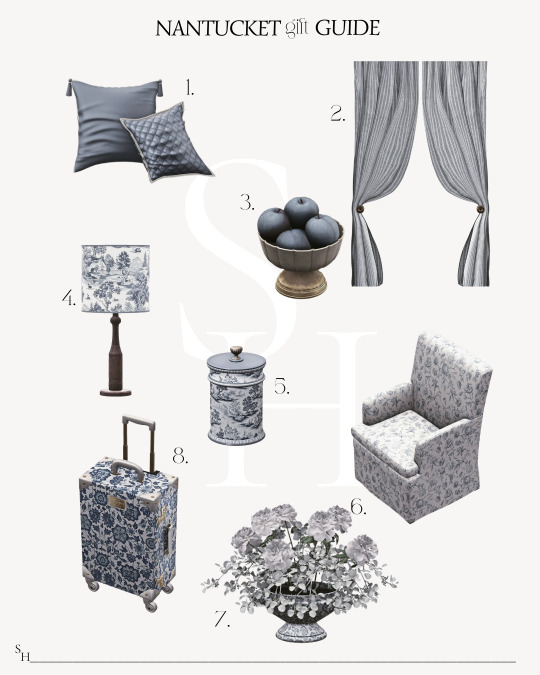
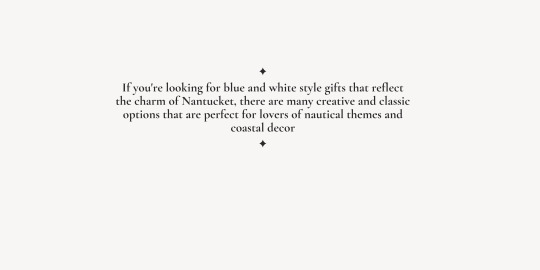
𝚂𝚑𝚘𝚙 𝚝𝚑𝚎 𝙶𝚒𝚏𝚝´𝚜
𝟏.𝑳𝒐𝒓𝒓𝒂𝒏𝒊𝒂 𝑽𝒊𝒍𝒏𝒖𝒆 𝑷𝒊𝒍𝒍𝒐𝒘𝒔 𝟐.𝑨𝒄𝒂𝒅𝒆𝒎𝒊𝒂 𝑪𝒖𝒓𝒕𝒂𝒊𝒏𝒔 𝟑.𝑷𝒍𝒖𝒎 𝑩𝒐𝒘𝒍 𝟒.𝑻𝒐𝒊𝒍𝒆 𝑻𝒂𝒃𝒍𝒆𝒍𝒂𝒎𝒑 𝟓.𝑻𝒐𝒊𝒍𝒆 𝑪𝒂𝒏𝒅𝒍𝒆 𝟔.𝑭𝒂𝒓𝒎𝒉𝒐𝒖𝒔𝒆 𝑫𝒊𝒏𝒊𝒏𝒈 𝒄𝒉𝒂𝒊𝒓 𝟕.𝑭𝒍𝒐𝒓𝒆𝒏𝒕𝒊𝒏𝒆 𝑪𝒆𝒓𝒂𝒎𝒊𝒗 𝑽𝒂𝒔𝒆 𝟖.𝑶𝒓𝒚𝒏 𝑺𝒖𝒊𝒕𝒄𝒂𝒔𝒆
𝙽𝚊𝚗𝚝𝚞𝚌𝚔𝚎𝚝 𝙶𝚒𝚏𝚝𝚜 𝙱𝚢
@sims4luxury @kerriganhouse @ bambisims
#the huntington#SH Luxury Gift Guide#ts4 cc finds#ts4 aesthetic#the sims interior#gift guide#ts4#ts4 interior#simspiration#sims4 cc#sims 4 community#ts4 inspo#sims interior#sims 4 aesthetic#cc finds#the sims cc#sims4 cc finds#the sims 4#sims#sims 4#sims 4 cc#maxis match#ts4 alpha#simblr#simblog#ts4 simblr#the huntington interior
211 notes
·
View notes
Text
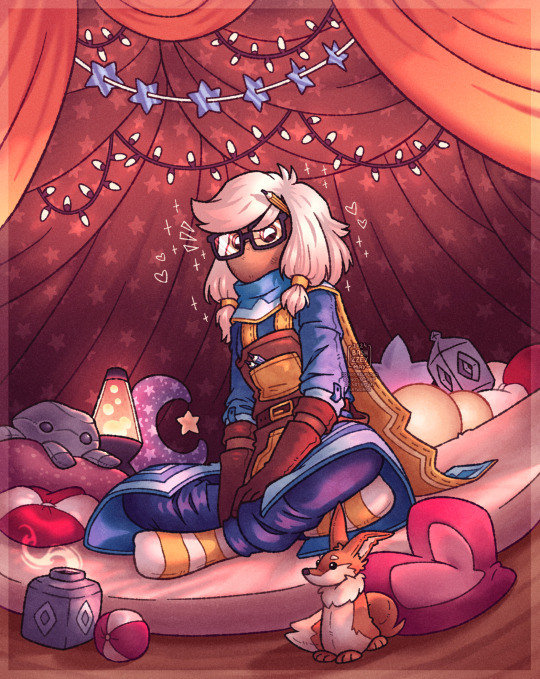
I really love the note from devs that Nesting Guide secretly loves making blanket forts 💖
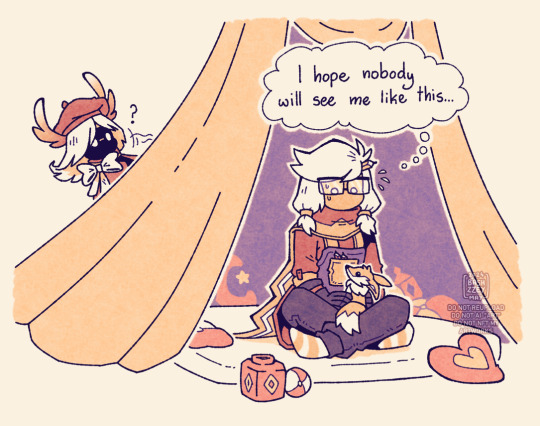
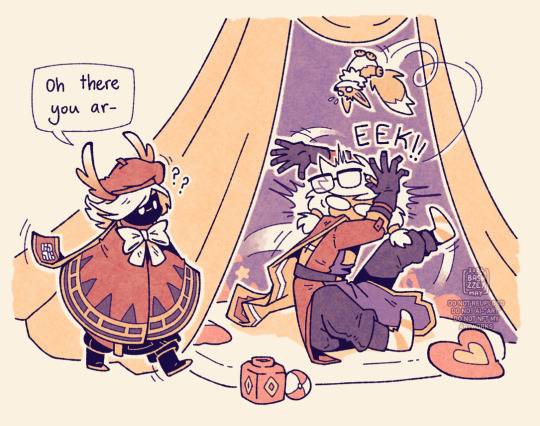
hehe silly Nellie <3
#cozy blanket fort...#I want to sit next to her and admire lil cute fort with her <3#also Nellie you can't hide this forever teehee <xD#poor Nellie DFJGDFH#she's so silly I love her so much#gotta find hidden room for Nellie hehe#also yes my current skykid fit appearance lol#sky children of the light#sky children of the light fanart#sky colt#that sky game#sky cotl fanart#sky fanart#season of nesting#nesting guide#bashzzey arts
966 notes
·
View notes
Text
Prompt 167
Honestly, Danny is having such a good time right now. He gets to travel with Ellie, explore space, just have fun. Plus his secondary protector-instincts are having soothed despite him not technically doing any hero-ing anymore. Really his sister had the right idea when she decided she wanted to become a doctor, this is honestly a blast.
And if someone does end up passing away, well, Ellie is always happy to help soothe their spirit and guide them to the Realms where they can reach their respective afterlife. Or become a ghost.
They are completely oblivious to the fact that there are now legends and entire temples dedicated to them now. Apparently accidental ascension is in fact a thing, as Dan later laughs at them about.
#prompts#Dcxdp#dpxdc#Dan was already thought of as a god of destruction & change#He’s laughing at his ‘siblings’ for making them a trio#So many planets throughout time now include 3 gods/spirits/etc in their worship under different names but similar faces#One of those planets was Krypton#Clark’s parents prayed to Dan-El the Healer that their son would be safe and in good health wherever he went#They prayed to El-Nath the Guide that his journey would be safe & that she would not have to guide him to the afterlife instead#They prayed to Jor-Dan the Destroyer that they’re wrong and if not that their planet’s End is a merciful one#Clark finds this out when researching stuff from his ship/the Fortress#Hey that’s kind of funny he saw a similar looking being floating among the stars when he first tested leaving the atmosphere hehe#....... W a i t a minute-#Space Core Danny#Moon Core Ellie#Sun Core Dan#Look Jazz’s dream in canon is to become a brain surgeon and I think she deserves to be able to do that#Medical school is hard AF#Danny apprenticed under Frostbite & So Many Realms ghosts who are Very Eager to pass on their knowledge
1K notes
·
View notes
Text

#kirby#daily kirby#my art#digital#hal laboratory#nintendo#still yakuza lmao#I don't remember which day I started it but it was definitely no earlier than the 30th#I think I didn't start until I actually got holiday packages into the mail on the 3rd.#my partner started playing it like the day after it got released for switch#which I think was late october?#but he has like. a job. so he's just been playing an hour here a couple hours there yknow#we are both very much getting our money's worth though lol#I try to stop playing by midnight but I didn't manage that today -n-#I really wanted to find the last 2000 yen bill without looking it up but I was Struggling#(I did find it tho)#I've still got a decent amount of stuff left to do#even discounting the completion list stuff that doesn't interest me like the gambling#which I might at least try to do anyway#but we're both in chapter 9 of the main story now (although he's already a ways in)#(and I technically haven't done the last conversation of chapter 8 but I did all the actual Doin Stuff)#it sounds like there's probably 10 chapters from a thing I saw having to look up where majima was hiding the first time?#that's the only thing I've looked up so far though.#anyway I'm having fun#this is why I refused to start playing yakuza until I finished my holiday crafts.#oh wait I also looked up a clarifying explanation on one of the dragon moves you have to learn#I wanna do as much of it as I can without external guides#update from the next day I was incorrect about there being 10 chapters yay :)#more game for meeeee
308 notes
·
View notes
Text
Okay but what about a floret mommying her pinnate floret kitty girl wife alongside their mistress but then on occasion both florets team up to try and mommy their mistress.
#floretposting#human domestication guide#hdg#floret#affini#like just#their mistress finds it extra adorable when they try to mommy her#and she makes sure to properly reward them afterwards#honestly i just love the idea of a relationship everyone is doing some level of mommying to each other#or in this case at least trying to
187 notes
·
View notes